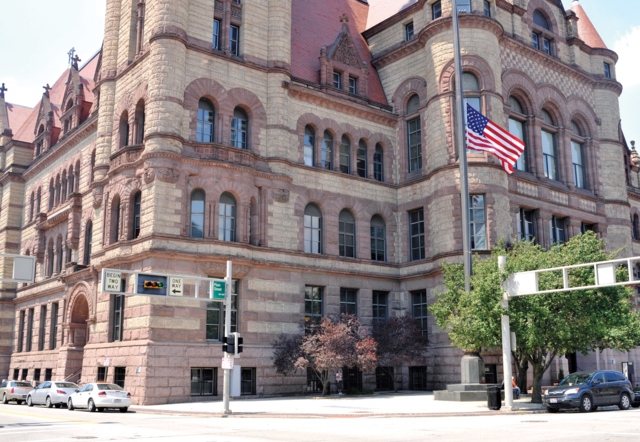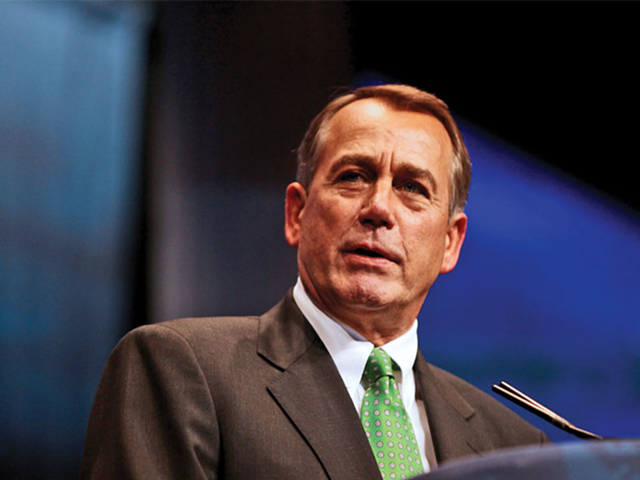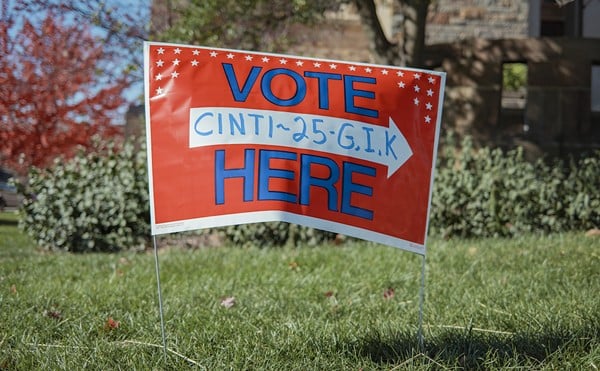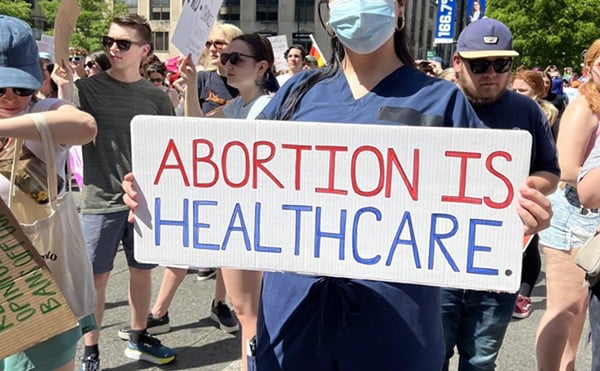Good morning all. March definitely let us know it was coming, didn’t it? I hope last night’s storms, high winds and floods passed you by and you’re safe and dry right now. Anyway, let’s talk non-weather-related news, shall we?
Cincinnati’s three mayoral candidates locked horns last night in their first debate, which was convened by local branch of the AFL-CIO labor union at South Avondale School. Mayor John Cranley, Cincinnati City Councilwoman Yvette Simpson and former University of Cincinnati board chair Rob Richardson Jr., all Democrats, are fighting it out ahead of the city’s May 2 mayoral primary. The top two vote-getters will then go on to the November general election.
One of the main focuses of the evening was transit, both in the form of the streetcar — which Cranley used against Simpson and Richardson, saying they would spend millions to expand it if elected — and the sorry state of the city’s Metro system, which needs something like $1 billion in upgrades over the next few years according to an outside consultant. Simpson has been a vocal supporter of the streetcar but has widened her approach and says she wants to push hard for overall regional transit improvements. Richardson has come out in the past saying he supports expanding the streetcar into uptown, but has echoed an emphasis on regional transit efforts.
That’s something Cranley has said he’d like to see as well. He recently released a plan for better Metro service, which hinges on county voters approving a sales tax increase, after which Cranley would use a portion of the city’s earnings tax that currently funds bus service to pay for other infrastructure. Simpson, who has traded off with Cranley in calling transit a “civil rights issue,” railed against the current inefficiency of Cincinnati’s Metro system.
“I can get to Columbus in two hours, but I can't get to Walnut Hills" from Mount Airy," she said to the crowd packed into the school gymnasium. Richardson, meanwhile, blasted both Simpson and Cranley for having no concrete plan for improving transit in the city.
The three also debated employment, race, poverty and other issues during the two hour forum. Things got particularly heated between Simpson and Cranley at some points. Simpson hit Cranley over perceived political dealings with unions and other groups and lambasted his handling as a city councilman of the city's 2001 unrest. Cranley was the chairman of Council’s Law and Public Safety Committee at the time, leading a meeting following the police shooting death of Timothy Thomas that boiled over in rage and frustration in the hours before civil unrest gripped the city. Cranley called those moves personal attacks.
• The final obstacle to complete demolition of downtown’s historic Dennison Hotel building appears to be gone. Woods Real Estate Investments appealed a decision by the city’s Zoning Board of Appeals that allowed Dennison owners Columbia REI, owned by Cincinnati auto dealers the Joseph family, to tear down the building. Woods argued that the building was a historic landmark that added value to nearby properties. But now Woods is expected to withdraw that appeal. Columbia has already started to demolish the Dennison.
• Hamilton County’s second-biggest city is in big financial trouble, and it’s going to take a lot to get it back on solid ground. Norwood, a separate municipality contained within Cincinnati’s city limits, has to somehow balance a $21 million budget with a $1 million deficit, navigate a state of fiscal emergency and deliver a plan for getting out of its fiscal mess to state auditors. Meanwhile, while it struggles to keep the lights on, roads are going unfixed. How did this happen? This article lays it out pretty well: a combination of big spending on city personnel, mostly police and firefighters, ballooning expenses related to city employee health care, a reduction in tax receipts municipalities get back from the state, some bad timing on some bond payments and big shifts in the city’s employer and resident tax bases have all played a role in the city’s current crisis.
• Vice President Mike Pence will be in Springdale Thursday morning, his first visit to the Greater Cincinnati area since taking office in January. Pence will speak about health care at a closed event just before noon at Frame USA in the Cincinnati suburb. The company’s CEO Dan Regenold is a vocal Trump supporter and one-time leader of the Tea Party in Greater Cincinnati.
• Ohio Democrats have their first confirmed gubernatorial candidate. State Sen. Joe Schiavoni, head of Democrats in that chamber, announced on Twitter that he's running for governor. Schiavoni has been in the Senate since 2008. His announcement comes as another potential candidate for beleaguered state Democrats, U.S. Rep. Tim Ryan, announced yesterday that he would not seek the governor’s office in 2018. Ryan, a Democratic favorite for the contest, says he thinks he can get more done by staying in the House. There are an array of potential Republican candidates for the job, which Gov. John Kasich will be term limited out of next year, including Lt. Gov. Mary Taylor, Ohio Attorney General Mike DeWine, Ohio Secretary of State Jon Husted and U.S. Rep. Jim Renacci.
• Last night was big for political speechifying, and if the mayoral debate wasn’t your cup of tea, then maybe you watched President Donald Trump’s address to a joint session of Congress. Trump’s speech was restrained and somewhat coherent by the president’s standards, striking a more friendly and hopeful tone, but it still hit many of the classic Trump talking points: an America-first trade policy, emphasis on a $1 trillion infrastructure spending package, repeal of the Affordable Care Act and other Trump touchstones. Trump didn’t go into much detail about any of the themes he mentioned in his address, and surprisingly doubled down on tough talk about immigration — one of his biggest campaign themes and an issue he made waves about the day before. Trump signaled Monday that he would be open to legal status for millions of undocumented residents in statements to reporters calling for compromise on the issue of immigration reform. However, in his speech last night, Trump was back to the harsh rhetoric about building a border wall and “restoring law and order” when it comes to immigration. So. That’s confusing.






